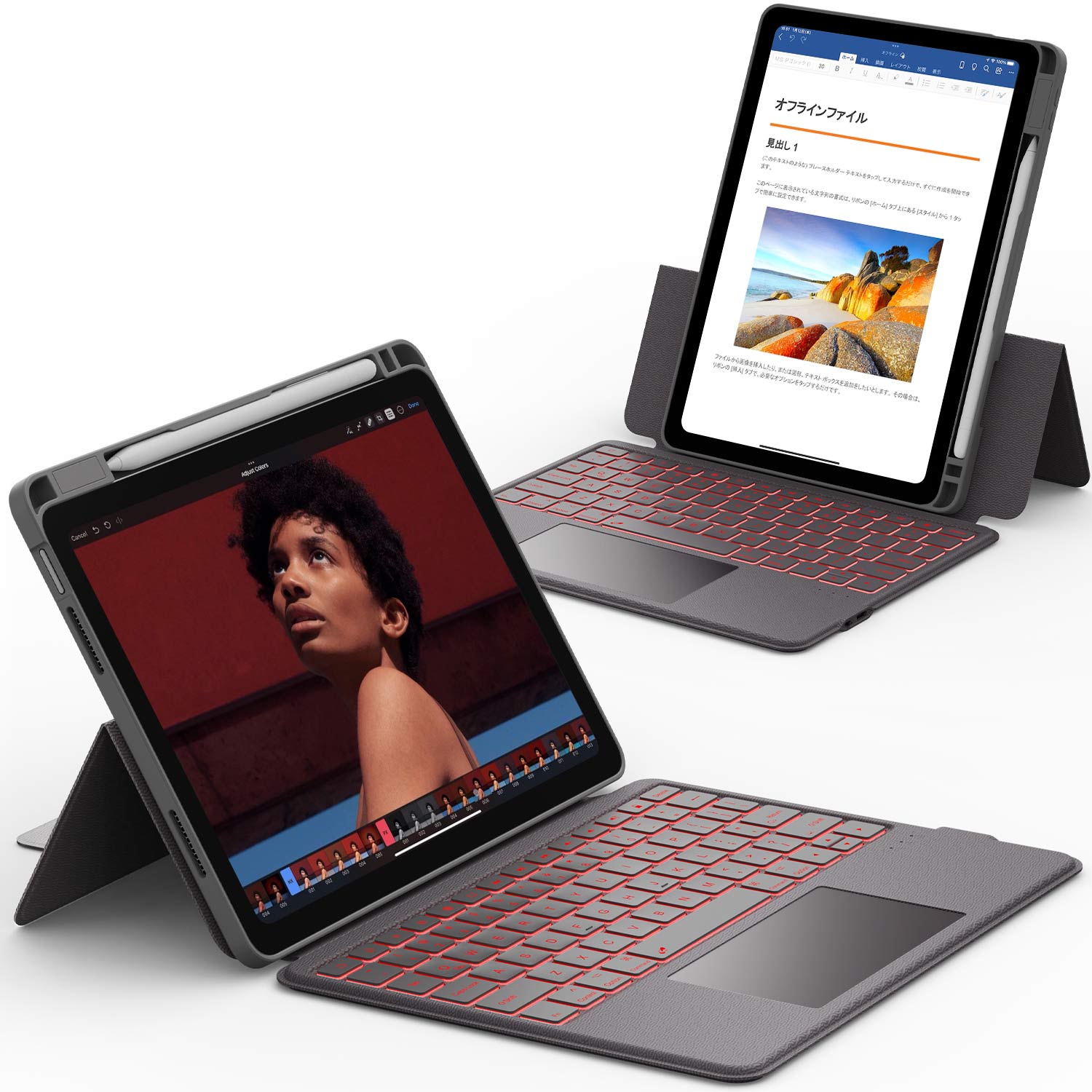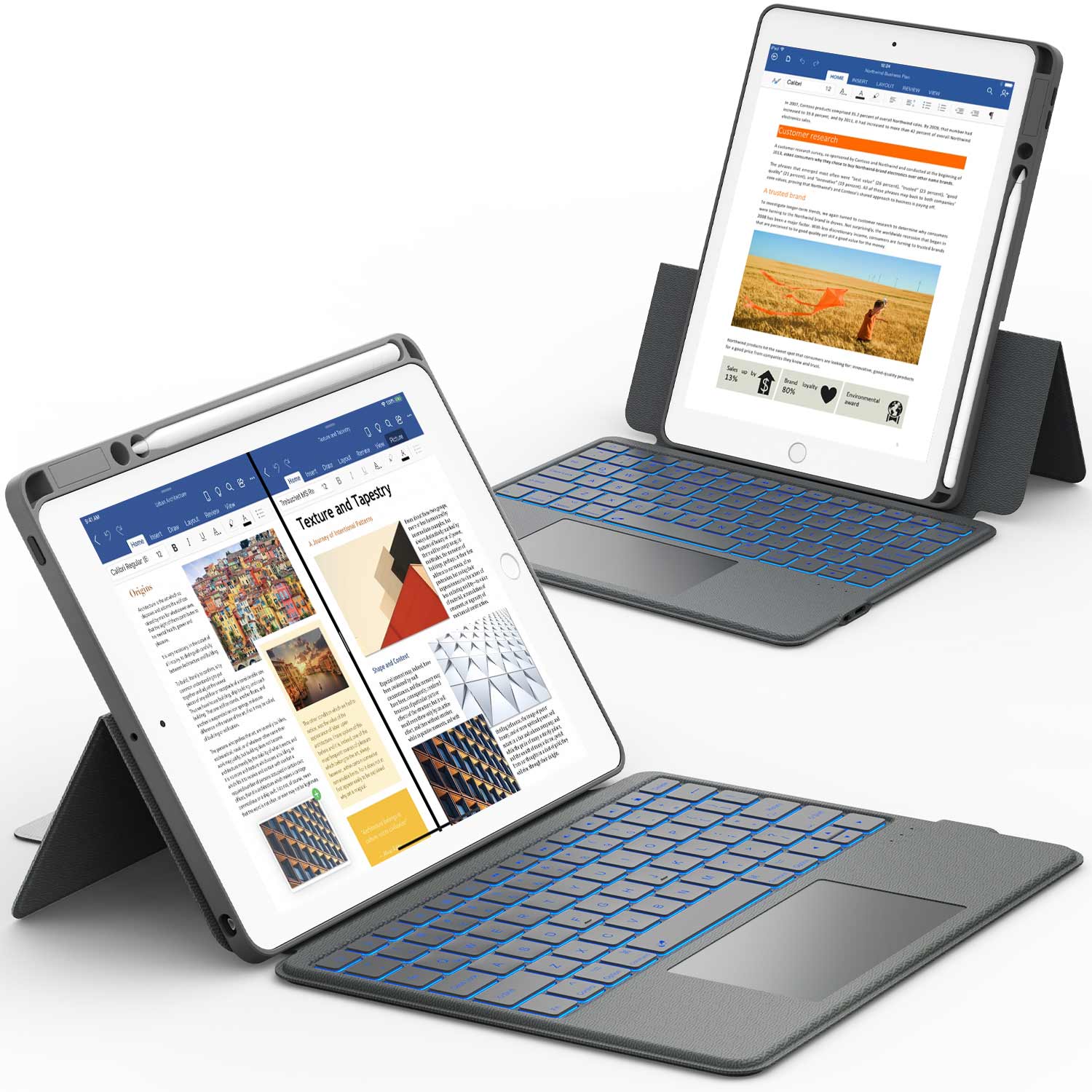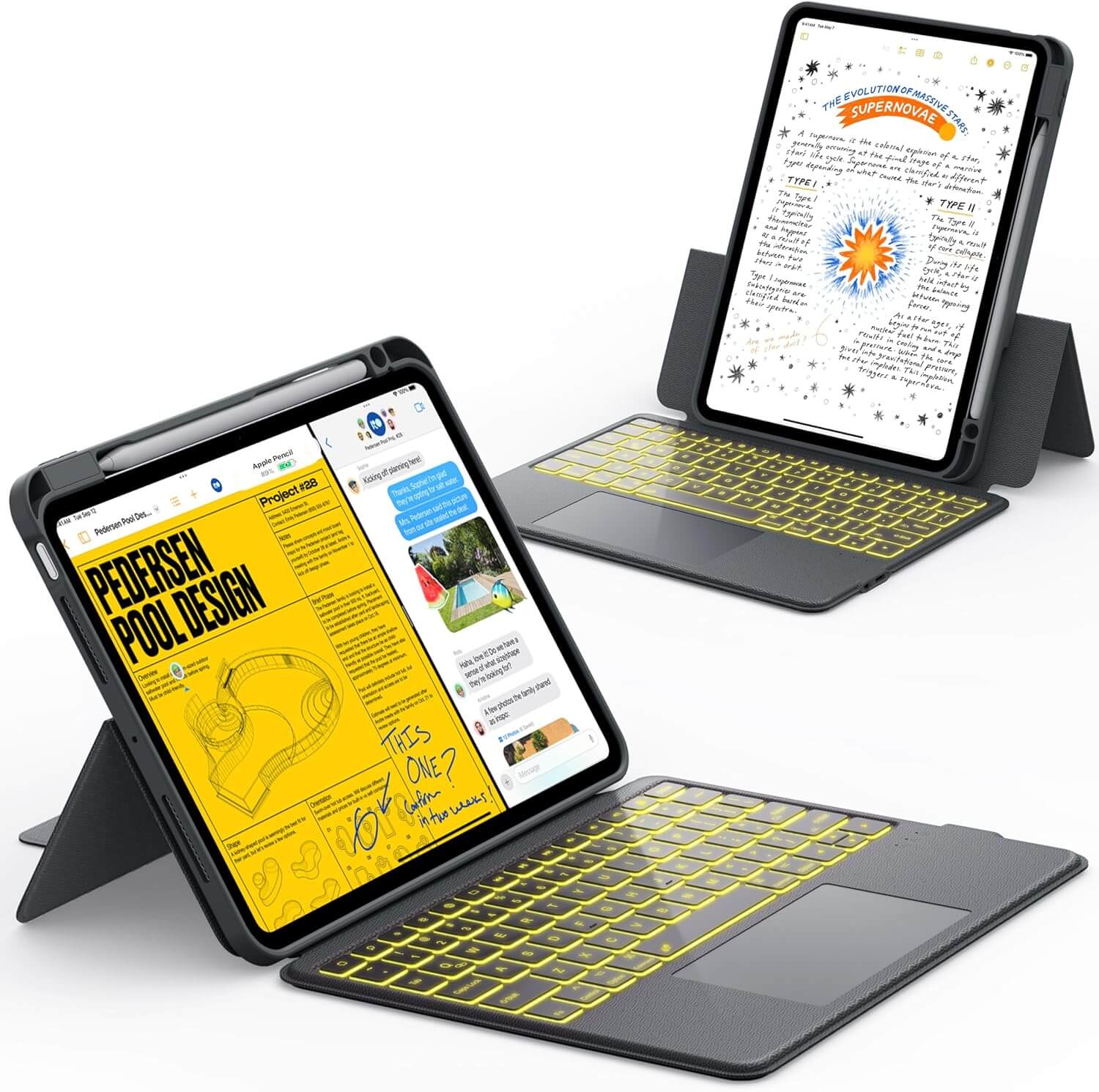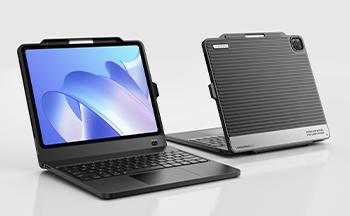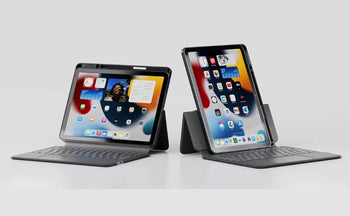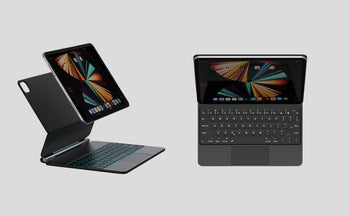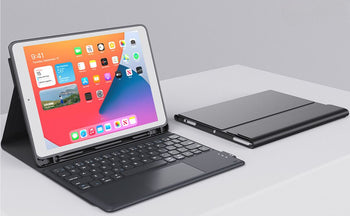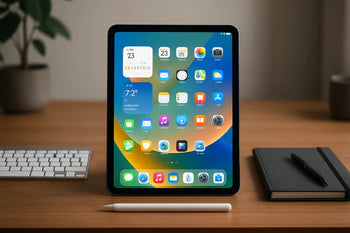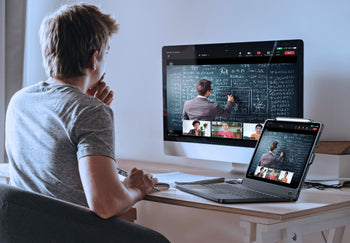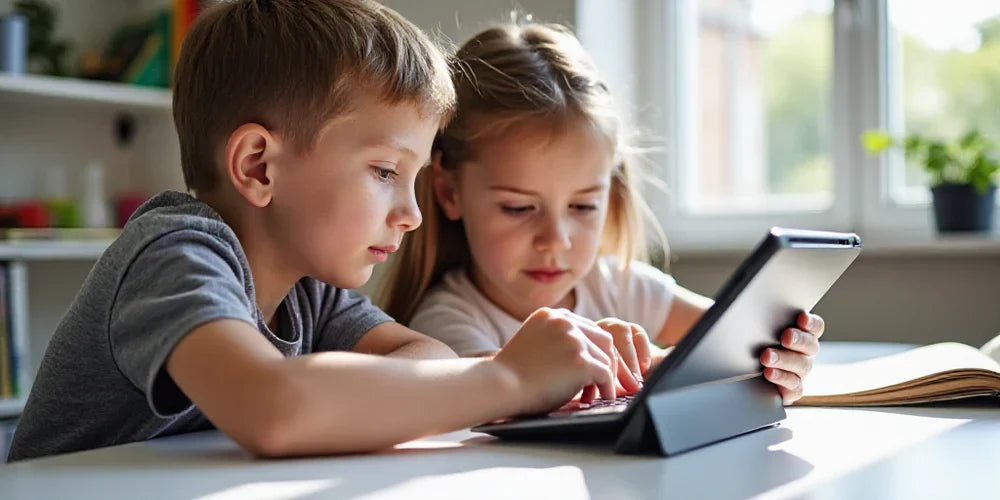Choosing the right iPad for your child can feel overwhelming with all the options out there. Each model has its own features, making it hard to decide which one fits your child's needs best. Whether your kid is just starting to learn with apps or needs a device for school and creativity, this guide will help you find the perfect iPad. We'll break down the key aspects to consider, from age-appropriate models to essential features and safety settings.
Key Takeaways
- Understand the different iPad models and their features.
- Choose an iPad that fits your child's age and usage needs.
- Consider storage capacity based on app and media usage.
- Utilize parental controls for a safer experience.
- Budget wisely by comparing new and refurbished options.
Understanding the iPad Landscape for Kids

iPads have become super common for kids, acting as both learning tools and fun entertainment. They're popular with parents who want their kids to learn and be creative. iPads also have strong parental controls, so kids can explore and learn safely.
iPad Variants Explained: From Air to Mini
The iPad lineup has different models for different needs. The iPad Air is light and powerful, great for older kids and teens who want a lot from their devices. On the other hand, the iPad Mini is small and perfect for younger kids. Its size makes it easy for little hands to hold and use. It's a good balance of modern features and ease of use, showing how Apple designs for kids.
Is There a Kid-Specific iPad Model?
Apple doesn't make an iPad just for kids, but they do have options that work well for them. The trick is to pick a device that fits your child's age, what they need, and how they'll use it. For example, you might want a model that's built tough, has educational apps, and lets you set parental controls. Adding a durable case can also make any iPad more kid-friendly, protecting it from drops and spills.
Choosing the right iPad means thinking about what your child needs. This way, they get a device that's not only fun but also helps them learn.
How Many Gigabytes Should Your Kid's iPad Have for Optimal Use?
Figuring out how much storage your kid's iPad needs is important. It depends on what they'll be doing with it. If they're mostly using it for streaming videos and some light gaming, 32GB might be enough. But if they plan to download a lot of apps, games, and movies, or create digital art, you'll want to go with 128GB or more. It's always better to have a little extra space than to run out. Consider how they'll use the Apple iPad 11-inch to determine the right storage size.
Picking the Best iPad Based on Age and Needs
Choosing the right iPad for your child means thinking about their age, what they need it for, and how they'll use it. A younger child might do better with something smaller and tougher, while older kids might need something more powerful for schoolwork and advanced apps. It's all about finding the right balance with your budget.
For older kids who will use their iPad for schoolwork and projects, pairing the device with a lightweight keyboard case can transform it into a mini laptop — making typing essays, taking notes, and multitasking much easier and more efficient.
For the Young Ones: The Ideal iPads for Kids Under Age 10
For kids under 10, you want something compact, durable, and good for educational apps. The iPad Mini is a great choice because it's easy for small hands to hold. It's also tough enough to handle a few bumps and drops.
Here's what to look for:
- A good case for extra protection
- Access to age-appropriate apps
- Easy-to-use parental controls
Best Choices for Tweens and Teens
Tweens and teens often need more from their iPads. They might be using it for schoolwork, creative projects, or more demanding games. This is where you might consider something like the iPad Air or even the standard iPad with more storage. They'll likely want something that can handle multitasking and has a decent screen size for watching videos or working on projects.
- Consider a keyboard case for schoolwork.
- Look for models with good battery life.
- Think about storage – 128GB is a good starting point.
Considering Educational Needs and Entertainment
Think about what your child will mainly use the iPad for. Is it mostly for learning, or is it more for fun? If it's for education, look for iPads that work well with educational apps and have good screen resolution for reading. If it's for entertainment, consider storage space for games and videos. A cellular iPad can be invaluable for students who travel or attend activities outside the home. This added connectivity ensures that learning and access to educational resources are never interrupted, making it a worthy consideration for parents evaluating iPads for kids.
It's a good idea to involve your child in the decision-making process. Ask them what they want to use the iPad for and what features are important to them. This can help you choose a model that they'll actually use and enjoy.
Key Features to Consider When Choosing an iPad
Alright, so you're thinking about getting an iPad for your kid. Cool! But with so many options, how do you pick the right one? It's not just about the price tag; it's about what your kid needs and what the iPad can actually do. Let's break down the key features you should be thinking about.
Understanding the Impact of Display Size and Resolution
The screen is kind of a big deal. Think about it: your kid will be staring at it for hours, whether they're reading, watching videos, or playing games. A smaller screen, like on the iPad Mini, might be easier for little hands to manage. But older kids might prefer a bigger display for a more immersive experience. Resolution matters too – higher resolution means sharper images, which is great for educational apps and just generally easier on the eyes.
Evaluating Storage Options for Apps and Media
How much space do you really need? It's a classic question. Here's the thing: apps, games, videos, photos – they all eat up storage. And trust me, kids are great at filling up devices. So, think about what your child will be using the iPad for. If it's mostly streaming videos and playing a few games, you might be able to get away with less storage. But if they're into creating art, downloading tons of apps, or saving videos for offline viewing, you'll want to go bigger. You don't want to be constantly deleting stuff to make room for new things.
Here's a rough guide:
- 32GB: Okay for very light use (mostly streaming).
- 64GB: A good starting point for most kids.
- 128GB+: Ideal for kids who download a lot of apps and media.
Assessing Battery Life and Performance
Nobody wants an iPad that dies halfway through a car ride or lags every time you open an app. Battery life is crucial, especially if you plan on using the iPad on the go. Look for models that offer at least 8-10 hours of battery life. Performance is also key. A faster processor means smoother gameplay, quicker loading times, and less frustration overall.
Don't skimp on performance. A faster processor will make the iPad feel more responsive and enjoyable to use, which can encourage your child to use it more for learning and creative activities. Plus, it'll help the iPad last longer, as it won't become obsolete as quickly. With solid battery life and good performance, pairing your child’s iPad with a responsive keyboard can unlock even more productivity, making it easier for them to write, edit, and complete assignments on the go.
Exploring Parental Controls and Safety Features

Setting Up Parental Controls Effectively
Setting up parental controls might seem like a chore, but it's super important. It's the digital equivalent of teaching your kid to look both ways before crossing the street. Apple has built-in features that are pretty good, but you need to actually use them.
Here's a quick rundown:
- Screen Time: This is your command center. You can set time limits for apps, block certain content, and even prevent your kid from making unauthorized purchases. Seriously, block those in-app purchases!
- Content & Privacy Restrictions: This lets you filter websites, movies, TV shows, and apps based on age appropriateness. No R-rated movies during family time!
- Family Sharing: Set this up so you can approve app downloads and keep an eye on what your child is doing. It also makes sharing purchased apps and subscriptions easier.
It's not a one-time thing. Kids are smart and will find ways around the rules if you aren't vigilant. Regularly check the settings and adjust as needed. Also, talk to your kids about online safety. Open communication is key.
Monitoring Usage and Screen Time
Okay, so you've set up the controls. Now what? Monitoring is the next step. Screen Time gives you reports on how your child is using their iPad. It shows you which apps they're spending the most time on, how often they're picking up the device, and more.
Here's what to look for:
- App Usage: Are they spending too much time on games or social media? Maybe it's time to set some limits.
- Pickups: How often are they grabbing the iPad? Frequent pickups might indicate boredom or an unhealthy attachment.
- Website Visits: Check the history to make sure they aren't visiting inappropriate sites. You can also use parental control apps for extra security.
Ensuring Online Safety for Kids
Online safety is a big deal. It's not just about blocking bad websites; it's about teaching your kids how to be safe online. Here are some things to consider:
- Safe Browsing: Use Safari's parental controls to limit website access. You can create a list of approved sites or block certain categories of content.
- Communication: Restrict who your child can communicate with via messaging and FaceTime. Only allow trusted contacts.
- Privacy Settings: Limit location services, microphone access, and camera usage. Kids don't always understand the implications of sharing this information.
Also, teach your kids about:
- Phishing: How to recognize fake emails and websites that are trying to steal their information.
- Cyberbullying: What to do if they are being bullied online or if they see someone else being bullied.
- Stranger Danger: Never talk to strangers online or share personal information.
It's an ongoing conversation, but it's worth it to keep your kids safe in the digital world. Don't forget to enable Communication Safety to protect them from explicit content.
Budgeting for Your Child's iPad
Figuring out the right iPad for your kid also means figuring out the right price. It's easy to get caught up in the latest models, but let's be real, kids don't always need the fanciest tech. This section breaks down how to make smart choices without emptying your wallet.
Comparing Prices Across Different Models
Okay, let's talk numbers. The price range for iPads is pretty wide. You've got the standard iPad, the Mini, the Air, and the Pro. The base models are usually more affordable and totally fine for basic stuff like educational apps and watching videos. As you go up in price, you get better processors (good for gaming), more storage, and nicer screens. But remember, the most expensive isn't always the best for your kid. Think about what they'll actually use it for. A younger child who mainly plays simple games won't need the iPad Pro. Here's a quick comparison:
- iPad (9th Gen): The most budget-friendly option, great for younger kids.
- iPad Mini: Small and portable, perfect for little hands.
- iPad Air: A good middle ground, powerful enough for older kids and creative projects.
- iPad Pro: The most powerful, but also the most expensive. Only necessary for serious users.
Understanding Refurbished vs. New Options
Consider going the refurbished route. You can save a good chunk of money and still get a perfectly functional iPad. Refurbished iPads are pre-owned devices that have been inspected, repaired, and cleaned by the manufacturer or a certified third party. They often come with a warranty, so you're not taking a huge risk.
Buying refurbished is a great way to save money, but make sure you're buying from a reputable source. Check the warranty and return policy before you buy. Also, be aware that refurbished devices may have minor cosmetic imperfections.
Here's what to keep in mind:
- Warranty: Make sure it comes with one.
- Source: Buy from Apple or a certified reseller.
- Condition: Check the description carefully.
Evaluating Long-Term Value and Durability
Think about the long game. How long do you expect this iPad to last? A cheap tablet might seem appealing now, but if it breaks in a year, you'll end up spending more in the long run. Investing in a slightly more expensive, but more durable, model can save you money over time. Also, consider how well the iPad will hold its value if you decide to sell it later. Don't forget to factor in the cost of a good case and screen protector – those are essential for protecting your investment. The Acorns Early Kids Money App can help teach your kids about the value of money and budgeting, making them more responsible users of their devices. Choosing a device that remains relevant and supportive of your child's needs for years to come is important.
Accessories to Enhance Your Child's iPad Experience
An iPad can be more than just a screen; it can be a portal to learning, creativity, and fun. But to really unlock its potential, you need the right accessories. Think of them as tools that can make the iPad safer, more useful, and more enjoyable for your child.
Choosing the Right Case for Protection
A case is the first and most important accessory you should buy. Kids aren't always the most careful, so a rugged case is a must. Look for cases that offer good drop protection, maybe even ones with a built-in screen protector. Some cases also come with a kickstand, which is great for watching videos or doing homework. It's a good idea to get one that's easy to grip, too.
Exploring Educational Apps and Resources
The App Store is full of amazing educational apps. Here are some ideas:
- Early Learning: Apps that teach letters, numbers, and basic reading skills.
- Creative Apps: Drawing, painting, and music creation apps to spark imagination.
- Coding Apps: Simple coding games and programs to introduce kids to programming concepts.
Don't just download any app. Read reviews, check age ratings, and make sure the app aligns with your child's learning goals. Many apps offer free trials, so you can test them out before committing to a purchase.
Utilizing Stylus and Keyboard Options
For older kids, a stylus and keyboard can really boost productivity. A stylus makes drawing and writing on the iPad much easier and more precise. A keyboard turns the iPad into a mini-laptop, perfect for writing reports or doing research. Consider these points:
- Stylus: Look for one that's comfortable to hold and has good pressure sensitivity.
- Keyboard: A Bluetooth keyboard is a good option, or you can get a case with a built-in keyboard.
- Compatibility: Make sure the stylus and keyboard are compatible with your iPad model.
Making the Most of Your Child's iPad
Encouraging Educational Use and Creativity
An iPad can be more than just a source of entertainment; it can be a powerful tool for learning and creativity. The key is to actively encourage its use for educational purposes and creative expression.
- Explore educational apps that make learning fun, like those that teach math or reading.
- Encourage creative activities such as digital art, music composition, or video editing.
- Set aside dedicated time for educational activities to balance entertainment.
It's important to remember that the iPad is a tool, and like any tool, its value depends on how it's used. By guiding your child towards educational and creative pursuits, you can help them develop valuable skills and knowledge.
Setting Up Family Sharing and Content Restrictions
Family Sharing makes managing your child's iPad much easier. You can share purchases, subscriptions, and even storage plans. Setting up Apple’s parental controls is also essential for ensuring a safe and appropriate experience.
- Enable purchase sharing to approve or deny app downloads.
- Set content restrictions to filter out inappropriate movies, music, and websites.
- Use Screen Time to monitor usage and set limits on specific apps or categories.
Engaging in Joint Activities with Your Child
One of the best ways to make the most of your child's iPad is to engage in joint activities. This not only provides quality time together but also allows you to guide their learning and exploration.
- Play educational games together and discuss the concepts involved.
- Watch documentaries or educational videos and have conversations about what you learned.
- Collaborate on creative projects, such as making a digital story or composing music.
Wrapping It Up: Choosing the Right iPad for Your Child
In the end, picking the right iPad for your child is all about finding that sweet spot between what they need and what fits your budget. Whether it’s for schoolwork, games, or just some fun, there’s definitely an iPad out there that’s perfect for them. From the affordable iPad 9th Gen to the more advanced iPad Pro, each model has its own perks that cater to different ages and uses. Just think about how old your kid is, what they’ll use it for, and how much you want to spend. With a bit of thought and the right protective gear, like a sturdy case, you can make sure their iPad is safe and ready for all their adventures.
Frequently Asked Questions
What are the different types of iPads available for kids?
Apple offers several types of iPads, including the standard iPad, iPad Air, iPad Mini, and iPad Pro. Each has different features, sizes, and prices to fit various needs.
Is there an iPad specifically made for children?
There isn't a model designed just for kids, but many iPads, like the iPad Mini, are great for younger users due to their size and durability.
How much storage should I choose for my child's iPad?
For most kids, 64 GB is a good starting point. If your child will download many games or videos, consider a higher storage option.
What features should I look for in an iPad for my child?
Look for a good display size, enough storage, and strong battery life. These features help ensure a better experience for learning and fun.
How can I keep my child safe while using their iPad?
You can set up parental controls to limit what they can access. Also, monitor their screen time and talk to them about online safety.
What should I consider when budgeting for an iPad?
Compare prices of different models, think about buying refurbished devices, and consider the long-term value of the iPad.
